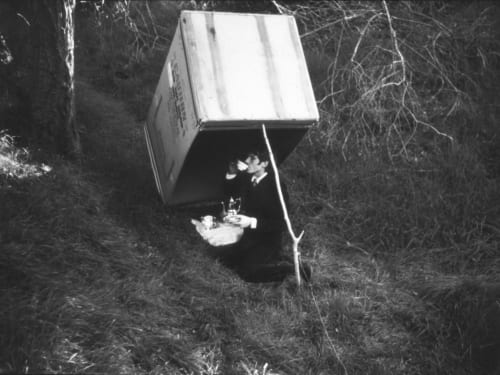Présentation
BAS JAN ADER | MARIE BRACQUEMOND | GUSTAVE COURBET | SALVADOR DALÍ | QUENTIN DEROUET | SIMON HANTAÏ | VICTOR HUGO | JACQUELINE LAMBA | GHERASIM LUCA | ROBERT MALAVAL | FLORA MOSCOVICI | OLIVIER MOSSET | GEORGES RIBEMONT-DESSAIGNES | JULIETTE ROCHE | MATHILDE ROSIER | AURÉLIA ZAHEDI
« Pour ma part, je serai toujours du côté des déserteurs »
— Annie Le Brun
L’histoire de l’art regorge de figures qui ont choisi de s’effacer, de se retirer, pour s’affirmer, par l’acte même du renoncement. D’autres ont fait face à un retrait forcé, immobilisés, contraints. En réunissant des artistes ayant emprunté des chemins de traverses, l’exposition Les Déserteurs dévoile les œuvres de personnalités hors cadres qui opèrent comme des équilibristes à la croisée du monde de l’art et qui mettent en valeur le lien intime entre création et retrait.
Selon Paul Ardenne, le renoncement, la désertion peut-être entendu comme une «stratégie de survie», une position de lucidité, une volonté de dissimulation où le retrait, loin d’être un échec, s’affirme comme une forme d’existence alternative.
Dans certaines périodes marquées par des bouleversements idéologiques et économiques – comme les années 1910 ou les décennies 1960-1970 – le renoncement à l’art semble devenir une réponse face aux désillusions, lorsque les promesses de l’art de transformer la société vacillent. Cette position critique se traduit souvent par un rejet du modèle capitaliste de l’art et de la marchandisation de la création.
Ce repli prend alors des formes variées au fil des époques : de la vie underground de Robert Malaval à l’éloignement volontaire de Georges Ribemont-Dessaignes, Juliette Roche, Jacqueline Lamba ou Simon Hantaï, en passant par le désert arizonien d’Olivier Mosset. Pour certains, comme Flora Moscovici, Aurélia Zahedi ou Mathilde Rosier, le retrait permet la création d’un écosystème alternatif ; pour d’autres, comme Salvador Dalí ou Quentin Derouet, il ouvre un espace-temps de création prolifique. Parfois, le retrait se mue en un acte engagé, comme chez l’apatride Gherasim Luca, ou en un processus créatif incarnant l’absence même, comme chez James Lee Byars ou Bas Jan Ader qui ont fait de leur retrait un acte artistique. Dans certains cas, la « stratégie de survie » est un ultime recours, permettant aux artistes de continuer à créer alors qu’ils sont contraints : Victor Hugo à Guernesey, Gustave Courbet qui dessinait inlassablement derrière les barreaux de sa cellule, tandis que Marie Bracquemond transforma son retrait forcé en un acte de défi face à l’autorité de son mari Félix Bracquemond.
Léa Salavert à travers ses recherches propose également une lecture genrée du renoncement : les retraits d’artistes femmes sont souvent moins valorisés ou pathologisés, tandis que ceux des hommes sont parfois mythifiés. Ainsi, le mythe romantique de l’artiste marginal, incarné par des figures comme Rimbaud, se réactualise dans ces récits de renoncement.
Les Déserteurs explore donc les multiples facettes du renoncement dans l’art, qu’il soit choisi, imposé ou en réaction à un monde trop étroit pour contenir les idéaux de certains artistes. Cette exposition invite à réfléchir sur la puissance de l’absence et à considérer le geste de retrait comme une expression aussi forte, sinon plus, que l’œuvre elle-même. En redéfinissant leur propre statut, les artistes renoncent aux conventions établies pour réimaginer leur relation à l’art.
A la mémoire de Chantal Helenbeck
Vues de l'exposition
Œuvres






















